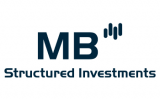Income ISA
What is an income ISA?
An income ISA is a way of using your ISA allowance that aims to provide you with a regular tax-efficient income payment on your investment or savings. Income may be paid on a quarterly, semi-annual or annual basis, so you can choose an option to suit your savings goals.
Your ISA allowance for 2024/25 is £20,000 per person. You are permitted to invest all or part of this amount in an investment ISA, or part of this amount in a cash ISA and the remainder in stocks and shares.
What types of income ISA are available?
A wide range of income ISAs are available. You can select income funds covering all major geographical regions of the world, income funds with different investment risk profiles and growth objectives, including income equity funds, bond funds, property funds, specialist funds, and cash funds. Income ISAs offer you the flexibility to make the most of your ISA allowance in a way that suits you.
You can choose from income funds that invest in equities or funds that invest in corporate bonds. If you’re looking to earn an income from your investment then there is a wide range of income fund ISAs that can help you to reach your investment goals.
Another option for those who are seeking income is a structured deposit plan. These are plans with a defined term, typically 3 to 6 years, which offer a rate of return that’s defined at the outset. The plans are usually linked to stock market performance.
A income ISA might suit you if:
- You want to use your ISA allowance to maximise your potential for income from your investments, especially at this time of low interest rates. The money you invest in an income ISA can offer the potential for tangible tax savings.
- You want to hold shares and increase your ISA amount over the long term – capital gains are 100% tax-free when held in an ISA.
- You’re looking to invest for the medium to long term – investment-based ISA accounts generally perform better over time than cash-based accounts.
- You’re saving with your retirement in mind. Many people use their yearly ISA allowance to invest in income-yielding plans – the result of which can generate a tax-free income during retirement. In fact, recent data shows that savers are now putting more money into ISAs than into pension schemes.
- You want to combine a straightforward, tax-free cash savings account with the benefit of regular income payments.
An income ISA might not suit you if:
- You’re only saving for a short-term goal. Because the income on your ISA pays out at regular intervals – for example, once a year – you may miss out on the benefits of this if you withdraw earlier. If you do decide to use an income ISA for a short-term savings goal, make sure you choose one that pays out income at more frequent intervals, such as once every quarter.
- Your first priority is to establish an emergency fund that you can easily access if something unexpected occurs. In this case, an instant access cash ISA might be more suited to your requirements.
What is an investment ISA?
How do I choose an investment ISA?
Before you open an investment ISA, make sure that:
- Your debts are under control – you’ve either paid them off or have affordable arrangements in place to do so.
- You have emergency savings that you can access easily if something unexpected occurs – if your car breaks down or you’re made redundant, you’ll need savings that you can use straight away.
If you’re very new to saving and don’t yet have a basic emergency fund, you may find that a cash ISA is more suitable for you at this stage. Once you’ve built up some accessible savings in this way, you might then want to consider an investment ISA.
Investment ISA tips for 2024
- You should be prepared to invest for the medium to long term with a investment ISA – for example, for five years or more.
- If you think you might require access to your cash in the next couple of years, a investment ISA may not be the right choice for you. Share prices can be volatile – and so if you were to withdraw your investment in the next twelve to eighteen months, you could end up with less money than you started with.
- Different investment ISAs have different investment options. These range from as little as £10 per month (e.g. through a fund) to a specified minimum investment (e.g. £500).
- Some ISA providers will give you online access to your account, allowing you to see the investment performance of your ISA and keep up to date with any charges incurred.
- If your investment ISA isn’t performing as well as you’d like, you will usually be permitted to transfer it another provider. To do this, speak to your new ISA manager who will arrange the transfer, allowing you to avoid losing any tax benefits by withdrawing your cash.
- You can transfer shares you get from an HMRC-approved SAYE (save as you earn) scheme run by your employer, or a share incentive plan, into a investment component of an ISA without incurring capital gains tax, up to your annual ISA allowance.
- You will not be able to transfer any existing non-ISA shares, or shares you’ve inherited, into an investment ISA.
- With an investment ISA, there is greater long-term growth potential than a cash ISA – however, bear in mind that the value of your investment can go down as well as up.
- If you have an investment ISA from a previous tax year, you’re permitted to move this into a current investment ISA or split it between more than one investment ISA.
- If you want to open a Junior ISA (JISA) for your child, you can also invest in investment on their behalf up to a maximum of £9,000.
How does a stocks and shares ISA work?
Your personal allowance for a stocks and shares ISA is £20,000 for the 2024/25 tax year. Investing this amount would use up your full ISA allowance, but if you prefer, you can divide your ISA allowance between a cash ISA and a stocks and shares ISA.
You could, for example, put some of your allowance in a cash ISA and the remaining balance can be invested in stocks and shares.
When considering a stocks and shares ISA, bear in mind that tax treatment may vary and is subject to change in the future.
Can I transfer a stocks and shares ISA to a new provider?
To transfer a stocks and shares ISA from one provider to another, speak to the new provider, who will arrange it on your behalf.
What do I need to bear in mind when choosing a stocks and shares ISA?
If you want the opportunity to spread your investments around different areas – and thus avoid putting all your eggs in one basket – you could choose a stocks and shares ISA provider that specializes in diverse portfolio management.
One of the key advantages of a stocks and shares ISA is that it can offer the potential to deliver higher returns than a cash ISA, especially if you plan to hold it over the long term.
Holding a stocks and shares ISA for a longer period of time increases your chances of riding out fluctuations in the market.
If you’re looking to hold your investment for at least five years, and are happy to take on a level of risk, then a stocks and shares ISA might be a suitable choice for you.
However, stocks and shares ISAs don’t provide the same level of security as cash ISAs. If you’re saving for the short term, need easy access to your money, can’t afford to risk your capital, or are simply risk-averse, then a stocks and shares ISA probably won’t be suitable for you.
As with all financial decisions, it’s best to seek independent advice if you’re unsure.
If a stocks and shares ISA isn’t the right choice for you, we also provide access to a leading range of cash ISAs.










